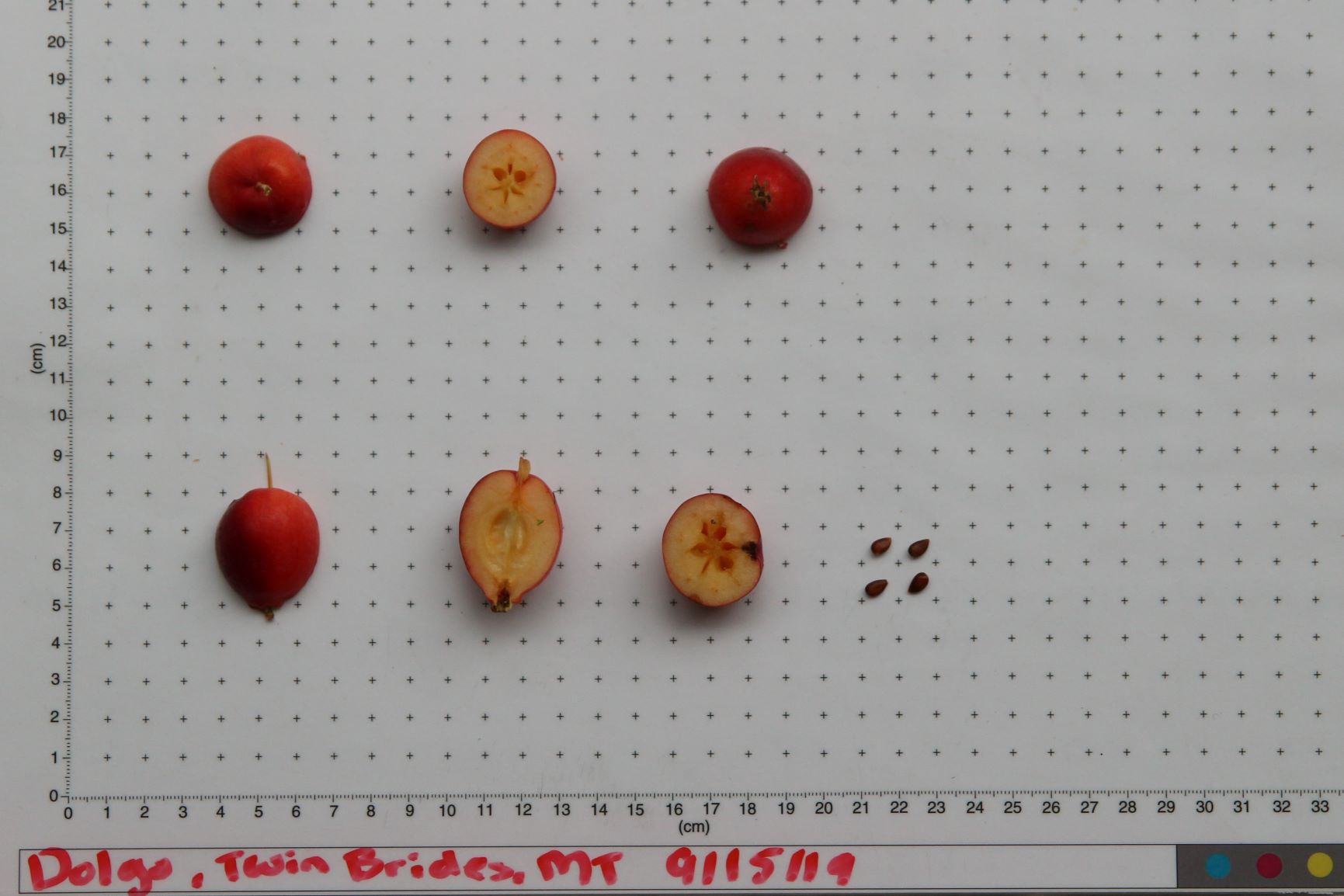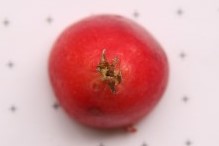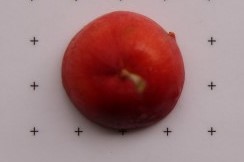Dolgo
 Fruit Description
Fruit Description
Size: Small
Shape: Round conical to oblong conical. Name means "long" in Russian and typically fruit is ellongated widening from apex to basin.
Skin: Red to deep purple red, occassionally yellow ground color. May have bloom.
Stalk (stem) and Cavity: Long, slender stem. Cavity is obtuse.
Basin: Flat, obtuse, calyx often protruding.
Calyx (Eye): Erect, convergent, open sometimes closed.
Core (Vertical): Calyx tube connical to funnel shaped. Carpels ovate. Core lines clasping.
Carpels and Axial Sac (Transverse): Usually five sometimes six. Axile open. Irregular.
Flesh: Cream to yellow.
Flavor: Tart, juicy, acidic, can become mealy.

Additional Notes
Synonyms: Malus baccata, Improved Red Siberian, Snow White Crab
First Recorded: Uknown, brought to US circa. 1897
Origin: Russia via South Dakota
Bloom time: Mid
Harvest: Mid
Use: Culinary, cider, jelly.
Storage: Poor
Disease: Moderately susceptible to fire blight.
Tree: vigorous, heavy bearer, very hardy.
Parentage: Seedling of Malus baccata, "Siberian Crab"
Frequency in Montana Orchards based on DNA testing: Low, but commonly planted as a modern ornamental.
History
Selected as the best seedling from several one year old Siberian Crab seedlings collected by Niels E. Hansen on a trip to Russian in 1897. Released in 1917, the Dolgo was prized as a rootstock for its cold hardiness and often planted as a shelterbelt tree in the Great Plains. Prized for its bright red fruit and ability to "jelly" easily and produce tasty pink cider it was also popular for kitchen use.
Additional Photos



References:
Bussey, D. J., & In Whealy, K. (2016). The illustrated history of apples in the United States and Canada.

